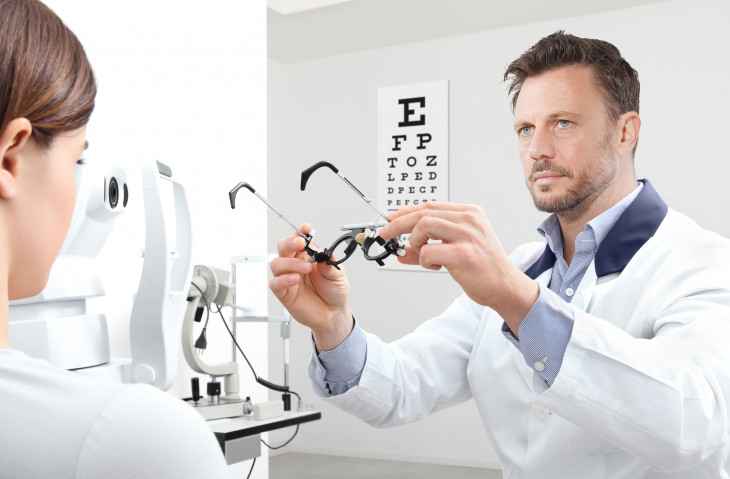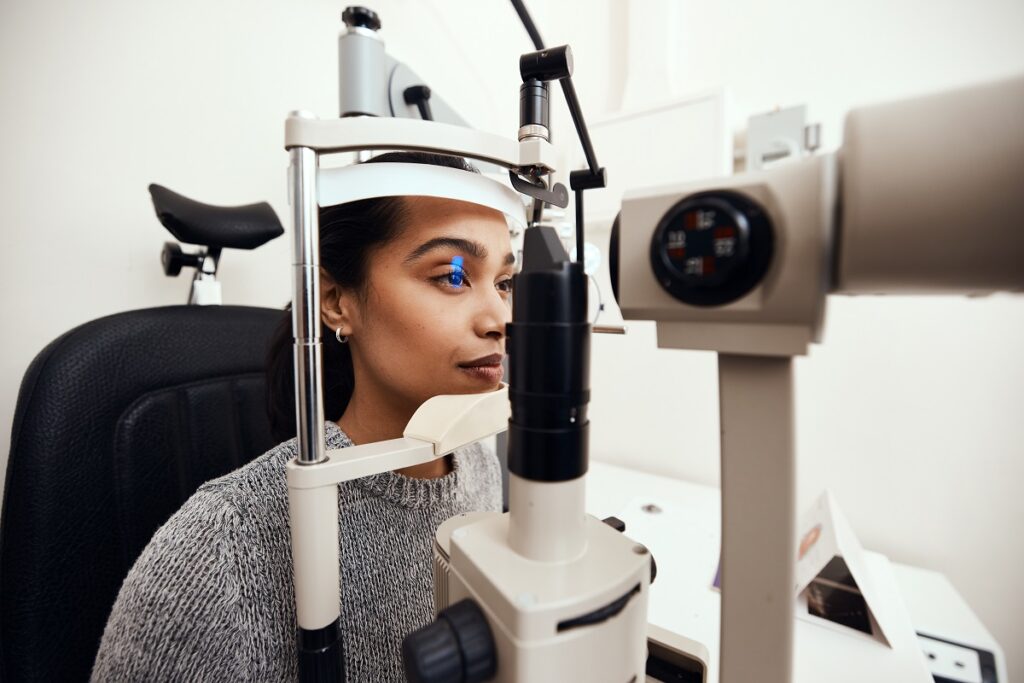Checking Out the current Technical Improvements in Optometry and What They Mean for Eye Doctors
In the ever-evolving area of optometry, recent technological improvements are improving how practitioners approach eye treatment. From the precision of Optical Coherence Tomography to the nuanced understandings supplied by AI-driven diagnostic devices, these advancements are establishing new criteria in patient analysis and treatment. Teleoptometry is positioned to redefine accessibility, guaranteeing that experience goes beyond geographical limitations. As these advancements permeate the technique, eye doctors are faced with the obstacle of accepting these devices to enhance individual end results. Yet, the question remains: exactly how will these technical changes redefine the duties and responsibilities within the occupation?
Developments in Diagnostic Equipment
Progressing the area of optometry, technologies in diagnostic tools have actually reinvented the means eye care specialists assess and identify ocular problems and aesthetic disabilities. The previous years has actually seen substantial technological developments, allowing even more detailed and accurate assessments. Optical Coherence Tomography (OCT), for example, offers high-resolution cross-sectional pictures of the retina, permitting the very early detection of illness such as glaucoma and age-related macular degeneration. This non-invasive imaging strategy has ended up being vital in modern optometric method.
An additional key advancement is the intro of sophisticated corneal topography systems, which map the surface curvature of the cornea with accuracy. These devices are especially helpful for fitting get in touch with lenses and detecting corneal disorders. In addition, digital retinal imaging has changed conventional ophthalmoscopy, using detailed, panoramic sights of the retina that promote extensive aesthetic examinations.
The growth of wavefront aberrometry has also been critical, making it possible for the analysis of refractive errors with unequaled precision (Eye Doctor). This innovation assists in customizing restorative lenses and enhancing medical outcomes for refractive surgeries. Collectively, these diagnostic innovations encourage eye doctors to provide superior patient care, making certain very early treatment and customized treatment strategies, inevitably enhancing aesthetic health and wellness end results
AI in Patient Administration
Structure on the foundation of sophisticated diagnostic devices, the unification of fabricated intelligence (AI) in person monitoring represents a transformative jump for optometry. AI systems are significantly utilized to enhance performance, accuracy, and customization in individual care.
In addition, AI-driven platforms promote streamlined person communications and administrative processes. Automated organizing, online consultations, and customized follow-up strategies not just improve individual fulfillment but likewise maximize time management for professionals. These systems can triage people based on the necessity of their conditions, making sure that those in important requirement obtain prompt focus.
Additionally, AI enhances decision-making by offering optometrists with evidence-based referrals and treatment paths. By incorporating information from digital health and wellness documents, AI devices offer insights that notify professional decisions, lowering the risk of errors and enhancing individual end results. As AI proceeds to evolve, its role in client administration will likely increase, improving the landscape of optometric care.
Advances in Retinal Imaging
In the realm of optometry, retinal imaging has observed exceptional technological developments that are enhancing analysis abilities and individual care. Technologies such as Optical Comprehensibility Tomography (OCT) and fundus digital photography have reinvented exactly how optometrists picture and evaluate the retina.
Enhanced imaging methods like OCT angiography are more refining diagnostic accuracy. Eye Doctor. Such advancements assist in the identification of minute retinal adjustments that could symbolize disease progression.
Additionally, innovations in expert system are augmenting retinal imaging by allowing computerized analysis of big datasets. These systems aid optometrists my latest blog post in recognizing patterns indicative of pathology, consequently improving diagnostic precision and efficiency. Jointly, these innovations are changing retinal imaging into a foundation of modern eye treatment, boosting outcomes and broadening restorative opportunities.
Teleoptometry's Expanding Function
Teleoptometry is increasingly coming to be an essential part of eye care, driven by innovations in data and diagnostic tools. As optometry welcomes digital change, teleoptometry promotes remote consultations, allowing eye doctors to expand their solutions past typical boundaries. This is particularly useful in underserved and country locations where accessibility to specialized eye treatment is usually limited. By leveraging high-resolution video conferencing and progressed retinal imaging, eye doctors can perform thorough eye tests from afar, making certain prompt medical diagnosis and treatment.
The combination of expert system (AI) additional boosts teleoptometry, allowing the analysis of aesthetic data and aiding in the discovery of ocular problems such as glaucoma and diabetic retinopathy. AI-powered formulas can rapidly analyze complex imaging information, offering eye doctors with useful insights that strengthen medical decision-making.
Moreover, teleoptometry sustains continuity of treatment with smooth integration with digital health documents (EHRs), allowing eye doctors to maintain thorough individual histories. This makes certain that clients receive personalized and constant treatment even when talking to different professionals.
Regardless of these advantages, obstacles remain, consisting of making certain data safety and managing individual expectations. However, teleoptometry represents a substantial stride towards even more available, effective, and patient-centered eye treatment. As innovation develops, its role is poised to increase additionally.

Future Trends in Eye Care
A myriad of innovative patterns is readied to improve the future of eye care, driven by technical developments and the evolving requirements of individuals. One considerable pattern is the integration of synthetic intelligence (AI) in diagnostics, which assures to enhance the accuracy and performance of eye exams. AI formulas can evaluate large amounts of information from retinal pictures, potentially spotting conditions like diabetic person retinopathy and glaucoma earlier than standard techniques.
Furthermore, customized medicine is obtaining traction in optometry, with genetic testing educating tailored treatment strategies. This strategy intends to maximize individual outcomes by tailoring treatments to specific hereditary profiles. Wearable innovation, such as smart contact lenses, is also coming up, supplying real-time content surveillance of intraocular pressure or sugar levels, hence providing continuous insights into ocular and systemic health and wellness.
The adoption of enhanced reality (AR) and digital reality (VIRTUAL REALITY) in training and client education is an additional emerging fad. These modern technologies offer immersive experiences that can enhance understanding and skills next both for optometrists and clients. As these fads develop, optometrists have to stay abreast of technical developments to offer innovative treatment, making certain better individual end results and complete satisfaction in the dynamic landscape of eye treatment.
Conclusion

Jointly, these diagnostic advancements encourage optometrists to supply superior client treatment, ensuring early treatment and customized treatment methods, ultimately improving visual health outcomes.

As these modern technologies proceed to progress, eye doctors need to adjust and include them right into practice, ultimately enhancing workflow performance and boosting the requirement of eye treatment delivered to patients.
Comments on “Top Factors to Go To an Optometrist Chino for Your Eye Health”